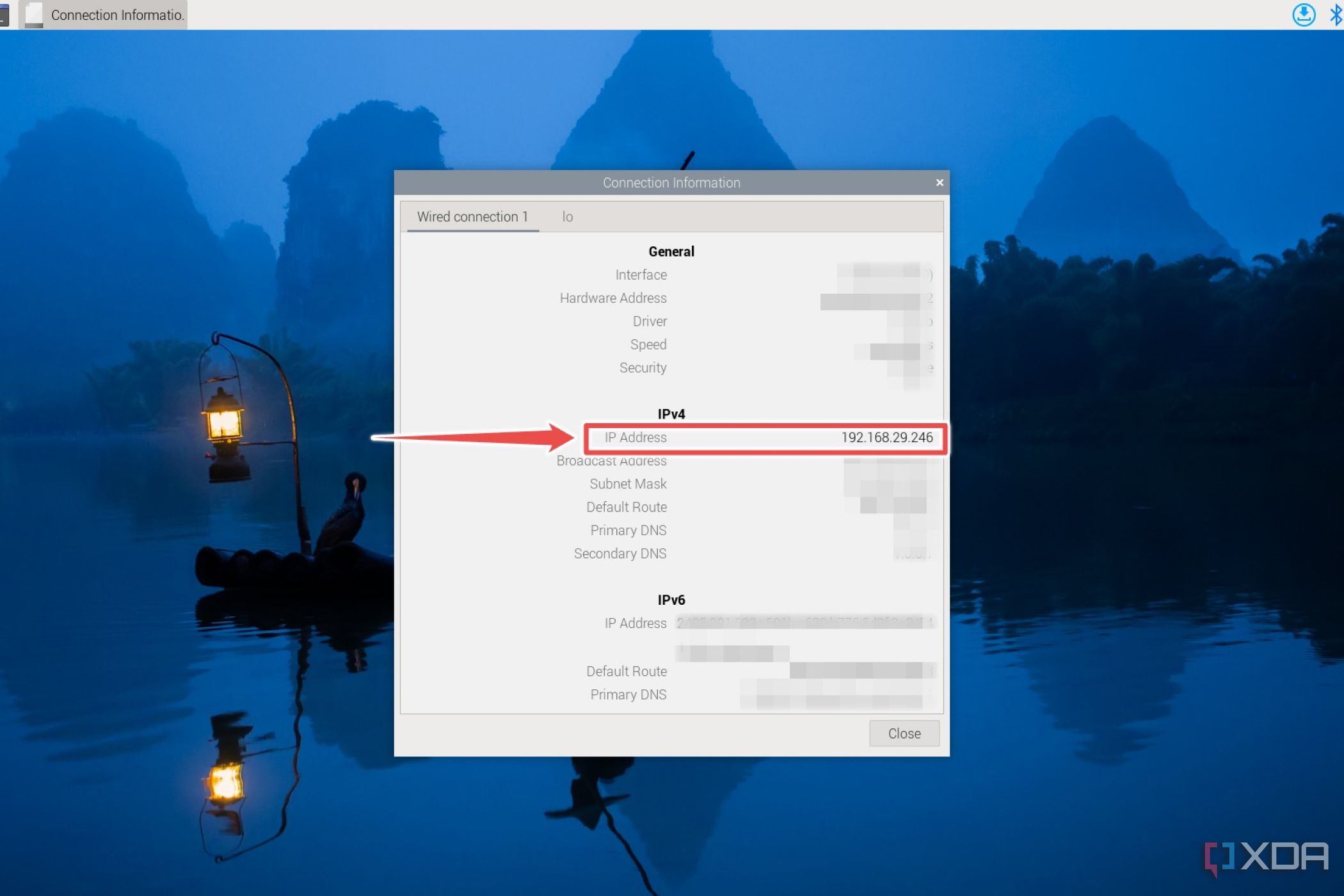So, you’ve got this cool little device called a Raspberry Pi, and now you want to securely connect to its IP address like a pro? Well, buckle up, because we’re about to dive deep into the world of Raspberry Pi networking! Whether you’re a hobbyist, tech enthusiast, or just someone looking to expand their knowledge, this guide is here to help you navigate through the process of securely connecting to your Raspberry Pi’s IP address. We’ll cover everything from the basics to advanced techniques, so let’s get started!
Let’s face it—Raspberry Pi has become a staple in the tech world. From building home automation systems to creating your own media center, this little device packs a punch. But to make the most out of it, you need to know how to connect to its IP address securely and directly. This isn’t just about plugging in wires; it’s about ensuring your setup is protected from prying eyes and potential threats.
In this guide, we’ll break down the steps, tools, and best practices to help you achieve a seamless and secure connection. Whether you’re working locally or remotely, you’ll learn how to manage your Raspberry Pi’s IP address with confidence. So grab a cup of coffee, and let’s unravel the mystery together!
- Narvel Blackstock The Man Behind The Music And More
- Aditi Mistry Video Call The Inside Scoop Yoursquove Been Waiting For
Why Securely Connect Raspberry Pi IP Address Matters
Before we jump into the nitty-gritty, let’s talk about why securely connecting to your Raspberry Pi’s IP address is so important. In today’s interconnected world, security can’t be an afterthought. Your Raspberry Pi might be running critical applications, storing sensitive data, or controlling smart home devices. Without proper security measures, you’re leaving yourself vulnerable to cyber threats.
Understanding the Risks
Here’s the deal: if your Raspberry Pi is exposed to the internet without proper protection, hackers could exploit vulnerabilities to gain unauthorized access. Imagine someone taking control of your smart home system or stealing your personal files. Scary, right? That’s why setting up a secure connection is crucial.
- Prevent unauthorized access to your network
- Protect sensitive data stored on your Raspberry Pi
- Ensure smooth and uninterrupted operation of your projects
Best Practices for Security
When it comes to securing your Raspberry Pi, there are a few best practices you should follow:
- Bolly4u Fix Your Ultimate Guide To Bollywood Movie Streaming
- Aditi Mohosty Hot Live The Phenomenon You Need To Know About
- Use strong, unique passwords for all accounts
- Enable SSH (Secure Shell) for remote access
- Regularly update your Raspberry Pi’s software
- Set up a firewall to block unwanted traffic
How to Find Your Raspberry Pi’s IP Address
Alright, let’s get down to business. The first step in securely connecting to your Raspberry Pi is finding its IP address. Don’t worry; it’s easier than you think. Depending on your setup, there are several methods you can use.
Method 1: Check via Command Line
If your Raspberry Pi is connected to a monitor, you can use the terminal to find its IP address. Simply open the terminal and type:
hostname -I
This command will display the IP address assigned to your Raspberry Pi. Easy peasy!
Method 2: Use Your Router
Another way to find your Raspberry Pi’s IP address is by checking your router’s connected devices list. Log in to your router’s admin interface and look for a device named "raspberrypi" or something similar. Bingo! You’ve got the IP address.
Method 3: Use Advanced IP Scanner
For those who prefer a graphical interface, tools like Advanced IP Scanner can help you identify all devices on your network, including your Raspberry Pi. Just download the software, run it, and let it do the work for you.
Securing Your Raspberry Pi’s Network
Now that you’ve found your Raspberry Pi’s IP address, it’s time to secure your network. This involves a combination of software configuration and hardware settings. Let’s take a look at some key steps.
Enable SSH for Remote Access
SSH (Secure Shell) is a protocol that allows you to remotely access your Raspberry Pi over a network. To enable SSH, follow these steps:
- Boot up your Raspberry Pi
- Open the terminal and type
sudo raspi-config - Navigate to "Interfacing Options" and select "SSH"
- Choose "Enable" and reboot your Raspberry Pi
Set Up a Firewall
A firewall acts as a barrier between your Raspberry Pi and potential threats. To set up a firewall, you can use a tool like UFW (Uncomplicated Firewall). Here’s how:
- Install UFW by typing
sudo apt install ufw - Enable the firewall with
sudo ufw enable - Allow SSH access with
sudo ufw allow ssh
Directly Connect to Raspberry Pi IP Address
Once your Raspberry Pi is secure, you can establish a direct connection. There are several methods to do this, depending on your needs and preferences.
Method 1: Use PuTTY for Windows
PuTTY is a popular SSH client for Windows users. Here’s how to use it:
- Download and install PuTTY
- Launch PuTTY and enter your Raspberry Pi’s IP address
- Set the connection type to SSH and click "Open"
Method 2: Use Terminal for macOS/Linux
If you’re using a macOS or Linux machine, you can connect directly via the terminal. Simply open the terminal and type:
ssh pi@your-raspberry-pi-ip-address
Replace "your-raspberry-pi-ip-address" with the actual IP address of your Raspberry Pi.
Troubleshooting Common Issues
Let’s face it—things don’t always go as planned. If you’re having trouble connecting to your Raspberry Pi, here are some common issues and their solutions:
Issue 1: Incorrect IP Address
Double-check that you’re using the correct IP address. If you’re still unsure, try using one of the methods mentioned earlier to find it.
Issue 2: SSH Not Enabled
Make sure SSH is enabled on your Raspberry Pi. You can check this by running sudo service ssh status in the terminal.
Issue 3: Firewall Blocking Access
If your firewall is blocking SSH access, ensure that you’ve allowed the necessary ports. For SSH, this is usually port 22.
Advanced Techniques for Secure Connections
For those who want to take their security to the next level, here are some advanced techniques:
Set Up a Static IP Address
A static IP address ensures that your Raspberry Pi always has the same address, making it easier to connect. To set this up:
- Edit the dhcpcd configuration file:
sudo nano /etc/dhcpcd.conf - Add the following lines:
interface eth0
static ip_address=192.168.1.100/24
static routers=192.168.1.1
static domain_name_servers=192.168.1.1
Replace the IP address, router, and DNS settings with your own network details.
Use SSH Keys for Authentication
SSH keys provide a more secure method of authentication compared to passwords. Here’s how to set them up:
- Generate a key pair on your local machine:
ssh-keygen - Copy the public key to your Raspberry Pi:
ssh-copy-id pi@your-raspberry-pi-ip-address - Disable password authentication:
sudo nano /etc/ssh/sshd_configand setPasswordAuthentication no
Data and Statistics: Why Security Matters
According to a recent report by Symantec, over 30% of IoT devices, including Raspberry Pi, are vulnerable to cyberattacks. This highlights the importance of securing your devices. By following the steps outlined in this guide, you can significantly reduce the risk of falling victim to these threats.
Conclusion
And there you have it—a comprehensive guide to securely and directly connect your Raspberry Pi’s IP address. From finding the IP address to setting up advanced security measures, we’ve covered all the essential steps to help you protect your device. Remember, security is not a one-time task; it’s an ongoing process. Keep your software up to date, monitor your network regularly, and stay informed about the latest threats.
Now it’s your turn! If you found this guide helpful, feel free to share it with your friends or leave a comment below. And don’t forget to explore more articles on our site for all things tech-related. Happy hacking!
Table of Contents
- Malissa Rauch Nudes The Truth Behind The Clickbait And What You Should Know
- Why Vegamoviesfun Is Revolutionizing The Way We Stream Movies


